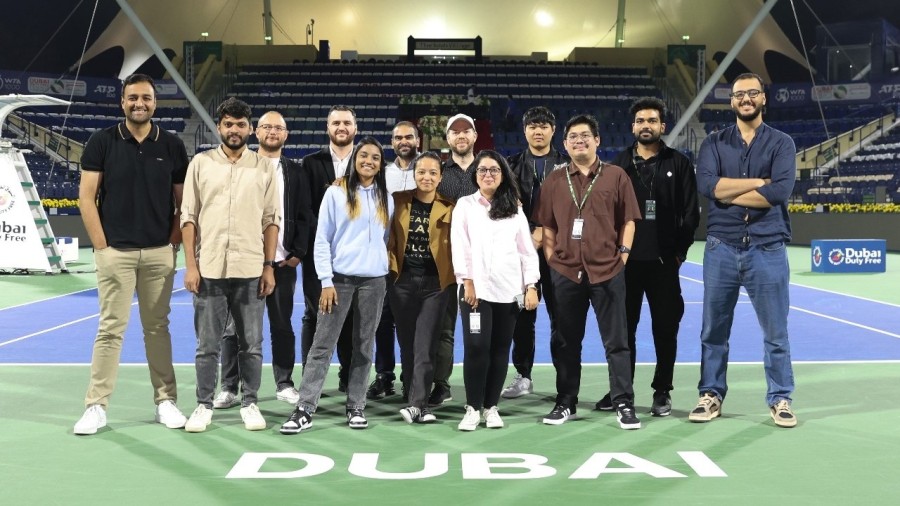I don't want to read your 1,000-word LinkedIn post. Look, I'm interested in your updates, achievements, events, and even your failures and learnings. But you don't need to write a chapter from a book every time you update us."
That's it. That's the post.
I know, it's tempting to prompt your favourite GPT and generate reams of content for the masses. The proliferation of AI has brought us into an age where content is incredibly abundant, now that thought leadership has emerged as one of the most effective strategies for organisations seeking to differentiate themselves. Particularly in the Gulf region, the ability to bring a human voice to complex industries can dramatically improve stakeholder trust and engagement.
But let's get real. Thought leadership is not simply about publishing articles and LinkedIn posts or giving keynote speeches. It is about offering original perspectives, challenging industry norms, and guiding conversations in ways that reflect an organisation's unique values and expertise.
Why it matters
A well-executed thought leadership strategy can build reputational capital, enhance credibility, and even influence customer and investor decisions.
According to the 2024 Edelman-LinkedIn B2B Thought Leadership Impact Report, 60 per cent of decision-makers are willing to pay a premium to work with organisations that demonstrate strong thought leadership. Even more surprising to me was that 75 per cent of executives said they had explored products or services they weren't initially considering, simply because the thought leadership they encountered challenged their thinking or presented fresh insight.
For leaders and communications teams in the GCC region, this is both an opportunity and a challenge. There is no shortage of interesting perspectives within the region, but many organisations struggle to turn internal expertise into compelling narratives that resonate externally. Part of the challenge is cultural: Gulf institutions have traditionally leaned towards institutional messaging, prioritising control and formality over individuality and voice.
Yet today's audiences - whether they're customers, investors, regulators, or future employees - expect more. They want to hear from real people with real insights; something original and relevant that tells them something they didn't know. But they also want leadership that feels human, not corporate.
This entails that leaders do not need to share every personal thought or post constantly. In fact, trying to publish too frequently often leads to diminishing returns. As one executive in the region joked, 'My comms team wanted me to post three times a week on LinkedIn. I told them I only have three good ideas a month - and that's being generous.'
The point is not to flood the market with content, but to focus on quality, clarity, and consistency while enabling executives to run their businesses effectively and efficiently.
Amplify your thoughts and understand your audience
It's true that the best thought leadership is grounded in personal experience and domain expertise, but it doesn't need to be provocative for its own sake.
Communication teams can play a vital role here, not by ghostwriting or scripting executives into blandness, but by helping them uncover and refine their voice. That might mean adapting long-form essays into bite-sized posts or supporting them with data visualisations, public speaking and media training, or podcast opportunities.
A multi-platform approach is also essential. LinkedIn remains the cornerstone for B2B communication, especially in the Gulf, but it shouldn't be the only outlet. Medium and Substack are valuable for publishing longer-form content without the editorial hurdles of traditional media.
Podcasts allow for more nuance and depth, and video can be particularly effective when leaders want to show passion and conviction. Even platforms like X or Reddit can be useful for real-time engagement, though these require a more agile and risk-managed approach.
What's often overlooked is the importance of cultural and generational relevance. Leaders must be mindful of how their messages land across different demographics, particularly in a region where identity and values remain central. But this also creates opportunity.
The Gulf's younger generations are globally connected yet deeply rooted in tradition. They're looking for leaders who understand both worlds, who can speak about innovation and purpose while staying grounded in context.
Many institutions in key sectors already lead in terms of infrastructure, investment, and digital transformation. What they often lack is visibility of the people behind the progress. Thought leadership can help bridge that gap by spotlighting the voices of those driving innovation, managing risk, or navigating change.
It's also a smart play from a talent and recruitment perspective. In a competitive hiring market, especially among skilled nationals and expatriate professionals, organisations that elevate their leadership voices tend to attract more interest and credibility. Strong thought leadership doesn't just inform - it inspires.
Thought leadership as comms strategy
For communications teams, the path forward involves a few key steps:
- First, identify the right spokespeople: not just the CEO or C-suite, but domain experts who have both substance and passion.
- Second, develop a clear editorial point of view and build content around it.
- Third, choose the right formats and platforms based on the audience and message.
- Finally, commit to a rhythm - this is more about continuity than frequency. The goal is to build a voice that is recognisable, credible, and trusted over time.
The Gulf is ready for more of this. The region has no shortage of bold ideas, ambitious strategies, or transformative investments. What it needs now is more visible, authentic leadership - leadership that thinks aloud, invites dialogue, and helps shape the future.
Wajih Halawa holds nearly 20 years experience across corporate and financial communications disciplines. At Capital Gate Advisors, he leads the strategic communications and public affairs practices, with expertise in strategic reputation and communications planning, counsel, and advocacy, as well as corporate positioning, thought leadership, and public affairs.



